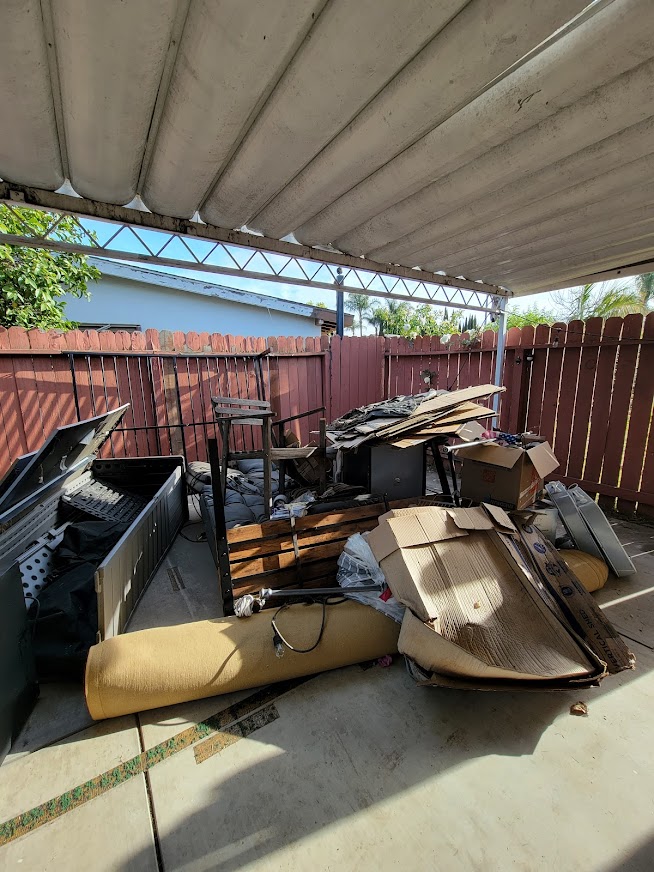Professional Waste Monitoring Techniques Customized for Industrial Settings
Tailoring waste administration methods to match the one-of-a-kind needs of industrial settings is not just advantageous however necessary for keeping functional performance and ecological sustainability. The pursuit for enhanced waste administration in commercial settings includes a precise method that balances regulatory conformity, cost-effectiveness, and eco-friendly duty.
Relevance of Tailored Waste Monitoring
Customized waste monitoring methods are necessary in commercial settings to optimize resource utilization and minimize ecological influence. Industrial procedures produce a significant amount of waste, varying from strong by-products to chemical pollutants, posing a hazard to the setting if not managed efficiently (Construction debris removal atlanta). By tailoring waste management approaches to match the certain needs and difficulties of each commercial facility, firms can not just abide by regulations however also improve functional efficiency and sustainability
One secret aspect of customized waste management is performing an extensive waste assessment to recognize the types and quantities of waste generated. This evaluation enables business to apply targeted options such as reusing programs, waste segregation protocols, and waste-to-energy campaigns. By understanding the make-up of their waste streams, industrial centers can develop cost-efficient techniques to minimize waste generation at the resource, leading to long-lasting ecological benefits.

Kinds of Hazardous Waste
What are the various groups of commercial waste commonly created in making procedures? Industrial waste can be identified into several major classifications based on its structure and attributes. Contaminated materials is just one of one of the most critical types, including chemicals, solvents, hefty steels, and other products that present a danger to human health or the atmosphere. This category frequently needs special delivery and disposal techniques to stop contamination and make certain security.
One more typical sort of commercial waste is non-hazardous waste, which incorporates materials like paper, plastics, and packaging waste. While non-hazardous waste might not present prompt dangers, proper monitoring is still essential to minimize garbage dump use and promote recycling and sustainability practices.

Hazardous Waste Handling Treatments
Effective monitoring of unsafe waste in industrial setups necessitates strict adherence to developed taking care of procedures to minimize threats browse around here and make certain environmental safety. Unsafe waste handling procedures involve numerous essential steps to reduce the potential impact on human wellness and the setting.
Second of all, when determined, contaminated materials should be very carefully segregated from non-hazardous waste to avoid contamination and ensure proper treatment. Storage space of unsafe waste need to abide by laws pertaining to control, labeling, and compatibility to avoid leakages, spills, or other incidents that could jeopardize employees or the atmosphere.
Furthermore, handling treatments must include using individual protective tools, staff member training, and emergency response procedures. Regular evaluations, monitoring, and documents of contaminated materials handling tasks are crucial to keeping compliance and determining areas for enhancement. By following these structured treatments carefully, industrial centers can successfully manage contaminated materials and maintain their commitment to environmental stewardship.
Applying Efficient Reusing Practices

To implement effective reusing techniques, commercial facilities ought to initially carry out a waste audit to recognize the kinds and quantities of recyclable materials produced in their procedures. Based on this audit, business can then develop marked reusing terminals, provide suitable training to workers on correct sorting strategies, and team up with relied on reusing companions for the collection and processing of products. In addition, establishing specific recycling objectives, tracking progress, and on a regular basis connecting with personnel regarding the significance of reusing are essential steps to make certain the success and sustainability of reusing campaigns in commercial setups.
Tracking and Continual Renovation
To make sure the efficiency and sustainability of waste administration methods in industrial settings, the implementation of robust surveillance and continual renovation procedures is necessary. Tracking includes tracking key efficiency indicators (KPIs) such as waste generation prices, reusing percents, and disposal prices. Frequently evaluating these metrics allows businesses to recognize areas for improvement and gauge the success of applied waste administration initiatives.
Continuous renovation is vital for refining procedures gradually. It involves evaluating checking information, determining inefficiencies, and implementing modifications to optimize waste monitoring methods further. This repetitive approach cultivates a culture of recurring enhancement and technology within the organization.
Utilizing innovation like waste monitoring software and IoT sensors can enhance monitoring efforts, supplying real-time information for informed decision-making. Worker training and involvement additionally play an important function in making certain the success of monitoring and constant enhancement campaigns, as frontline team are often principals in waste administration processes.
Verdict
To conclude, tailored waste management methods are browse around this site critical for commercial setups to effectively handle various types of waste, consisting of harmful products. By carrying out reliable reusing techniques and continually surveillance and boosting waste monitoring procedures, sectors can lessen their ecological effect and guarantee compliance with policies. It is vital for companies to prioritize waste monitoring to shield the setting and advertise sustainability in their operations.